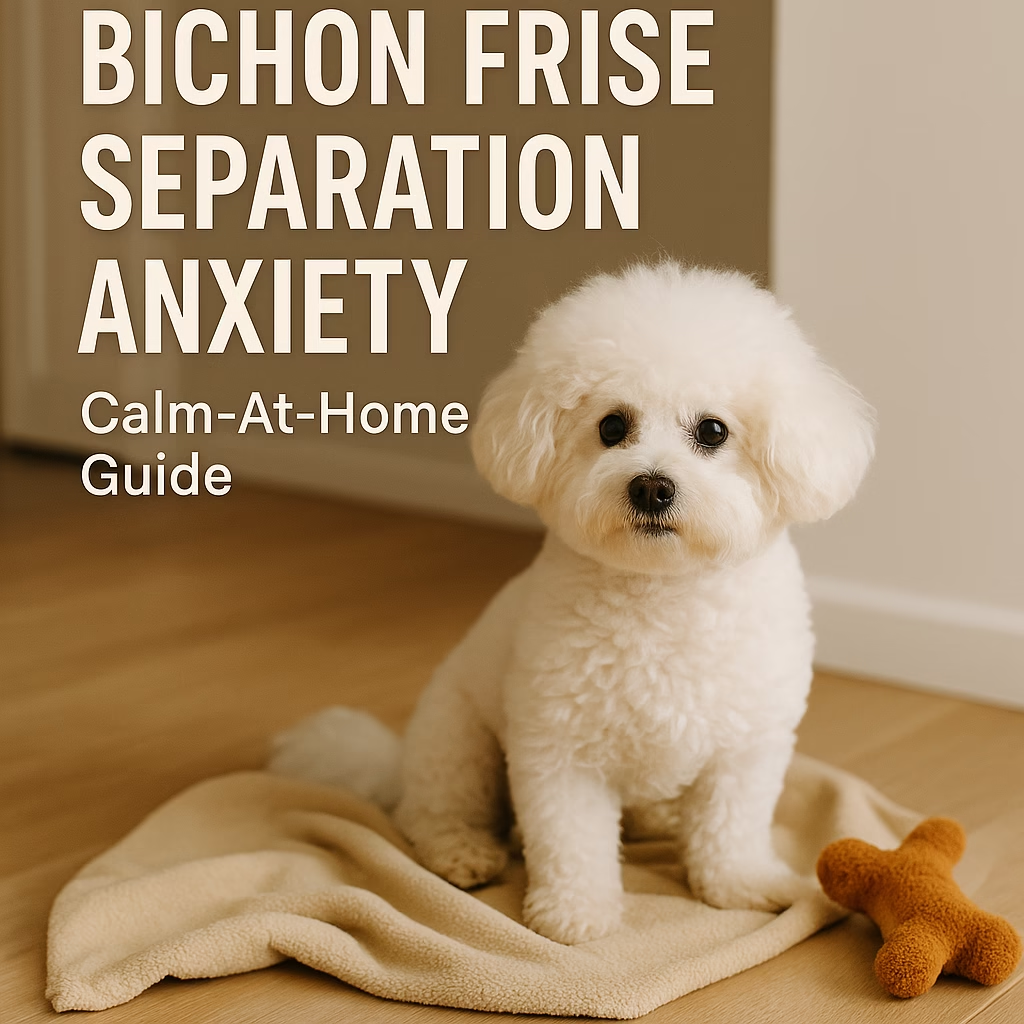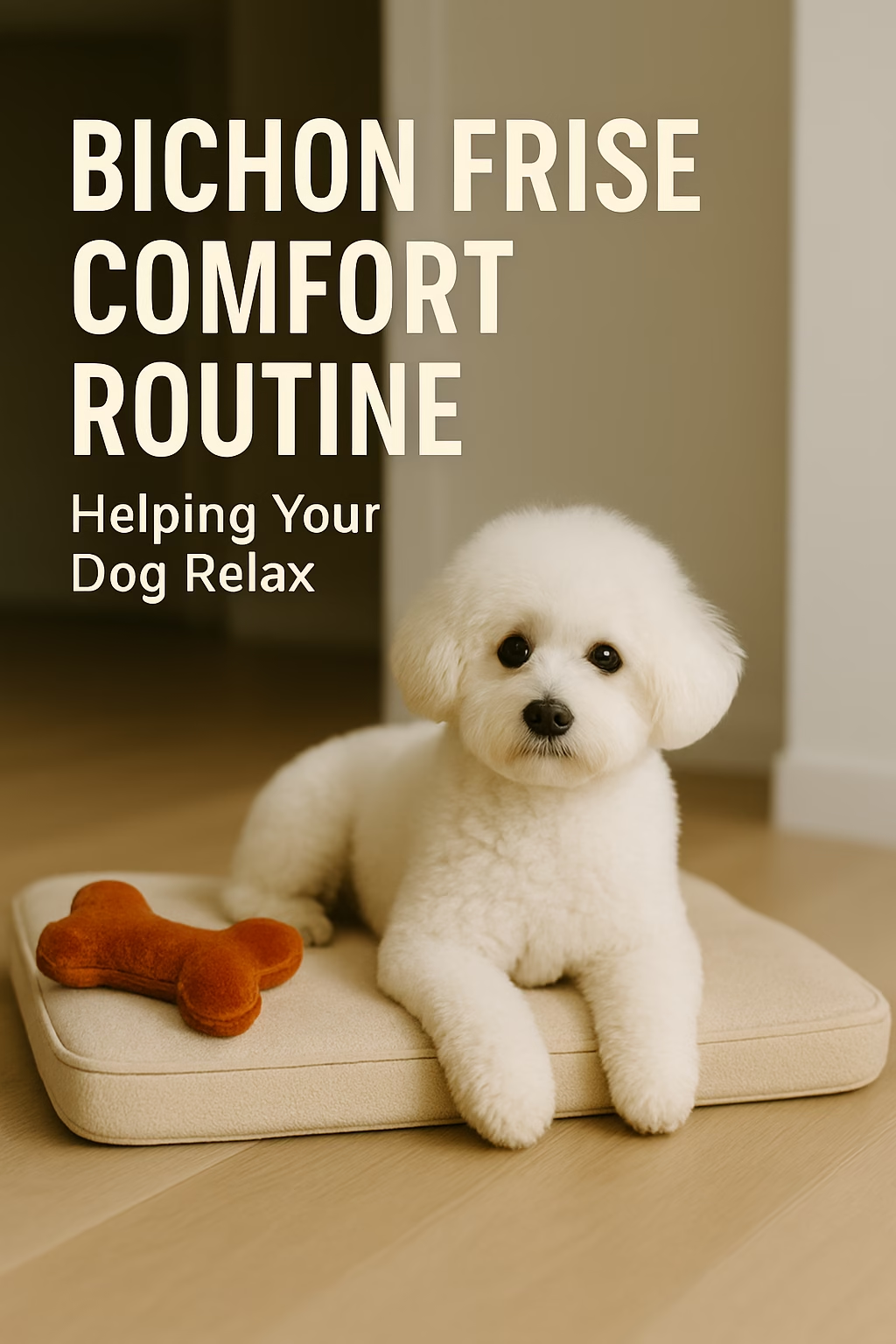Bichon Frise Separation Anxiety: Calm-At-Home Guide
Bichon Frises love being with their people. That’s adorable—until you need to leave the house. If your pup whines, paces, or barks the second the door closes, you’re likely dealing with Bichon Frise separation anxiety. The good news: a few steady routines and simple training tweaks can dial it down fast.

What Is Bichon Frise Separation Anxiety?
Separation anxiety shows up when a dog feels intense distress as you leave. Common signs include vocalizing, pacing, scratching doors, accidents indoors, or chewing things you didn’t mean to donate to the cause. Because Bichons are companion dogs, they can be extra sensitive to time alone.
Quick Checklist: Is It Anxiety—or Just Boredom?
- Happens right after you leave (not hours later)
- Improves as soon as you return
- Paired with panic behaviors (howling, door scratching, drooling)
If the issue is more about excess energy, add exercise and mental games first.
Build a Calm Routine (Your #1 Tool)
- Low-key exits/entries: No dramatic goodbyes or reunions.
- Pre-leave ritual: Short sniffy walk, water, then a food puzzle.
- Solo time ladder: Start with 1–3 minute absences and work up gradually.
Want firmer basics first? See Obedience Training for Bichon Frise at Home for calm-stay and settle work.
Training That Teaches Independence
- “Settle” at a distance: Reward your Bichon for relaxing on a mat while you move room to room.
- Door desensitization: Pick up keys, put on shoes, sit back down. Repeat until those signals stop triggering anxiety.
- Stretch the timer: Step outside for 30–60 seconds, return before panic starts, reward calm; slowly extend.
Environment Hacks That Help
- Enrichment: Puzzle feeders, snuffle mats, and stuffed Kongs make alone-time rewarding.
- Comfort cues: Soft bed, your worn T-shirt, or a familiar blanket.
- Soundscapes: Low-volume talk radio or white noise can mask hallway sounds.
- Sleep support: A well-rested dog handles stress better—peek at Bichon Frise Sleep: Patterns, Needs, and Tips.
Tackling Barking Driven by Anxiety
- Block visual triggers near windows.
- Teach “quiet” after a brief “speak,” then reward silence.
- Daily brain work (5–10 minutes) to cut frustration.
Dive deeper with Why Do Bichon Frises Bark So Much? Causes and Calming Tips.
When Crate or Pen Helps (and When It Doesn’t)
Some Bichons relax in a cozy crate or gated area if it’s introduced positively. If confinement raises panic, switch to a safe room instead and rebuild slowly using the solo time ladder.
Red Flags: Time to Call a Pro
- Panic starts before you touch the door
- Self-injury, severe drooling, nonstop howling
- No progress after 2–3 weeks of consistent practice
Ask your vet about behavior consults. For stubborn cases, meds alongside training can reduce baseline anxiety (your vet will guide you).
Extra Care That Supports Calm
- Grooming & comfort: A clean, tangle-free coat is comfier—see Bichon Frise Grooming: Essential Tips.
- Routine & expectations: For broader behavior patterns (stubbornness, house training, reactivity), check Understanding Bichon Frise Behavior Problems.
Step-by-Step Mini Plan (2 Weeks)
- Days 1–3: Pre-leave sniffy walk → food puzzle → 1–3 minute exits × 5 reps/day.
- Days 4–7: Bump to 5–7 minutes; add “settle” mat work between reps.
- Days 8–10: 10–15 minutes; introduce elevator/garage sounds if relevant.
- Days 11–14: 20–40 minutes (the tough window); keep wins easy and end before panic.

Conclusion: Your Bichon Can Learn to Be Okay Alone
Bichon Frise separation anxiety eases with a calm routine, gradual training, and the right environment. Keep sessions short, celebrate tiny wins, and stay consistent—you’ll see your pup’s confidence grow.
FAQs
How long can I leave a Bichon Frise alone?
For adults, 4–6 hours max; build tolerance gradually. Puppies need much shorter windows.
Can a second dog solve separation anxiety?
It may ease loneliness, but training and structure are still required.
What’s the fastest way to start desensitization?
Micro-absences: step out for 30–60 seconds, return before panic, reward calm, then extend slowly.
Will a crate make anxiety worse?
If introduced poorly, yes. Only use crates if your dog genuinely relaxes in one; otherwise try a safe room.
Helpful resources: ASPCA: Separation Anxiety · Humane Society: Separation Anxiety in Dogs · AKC: Bichon Frise